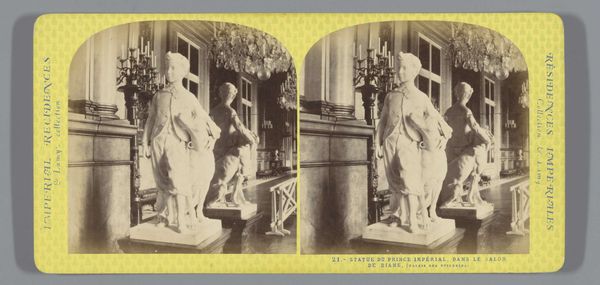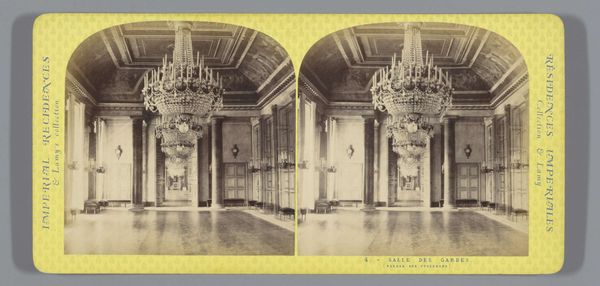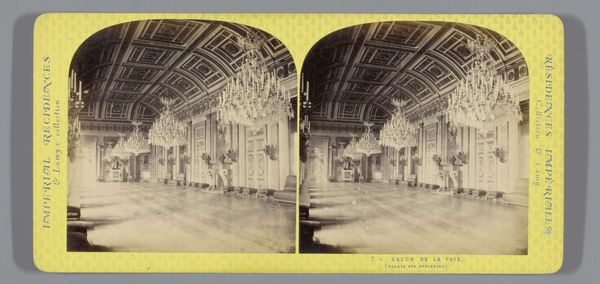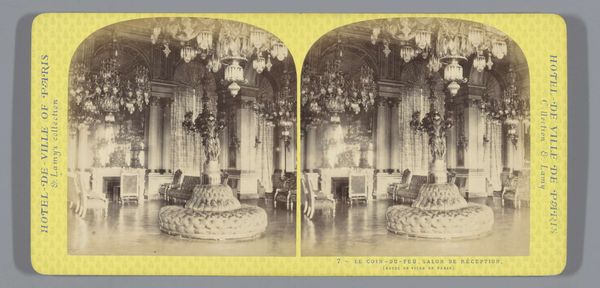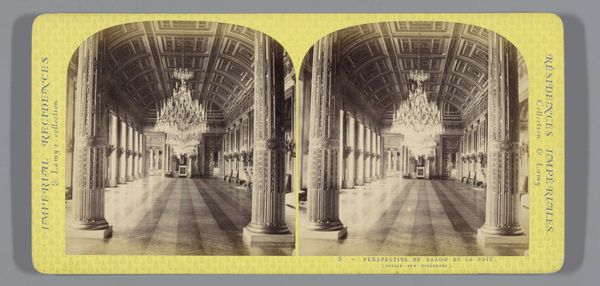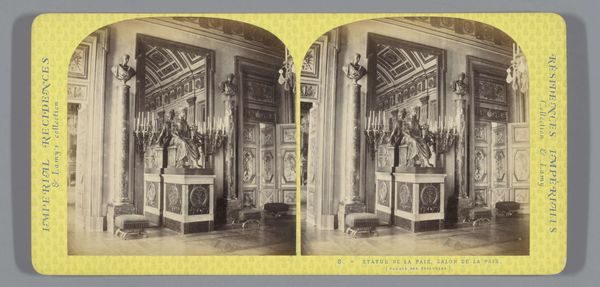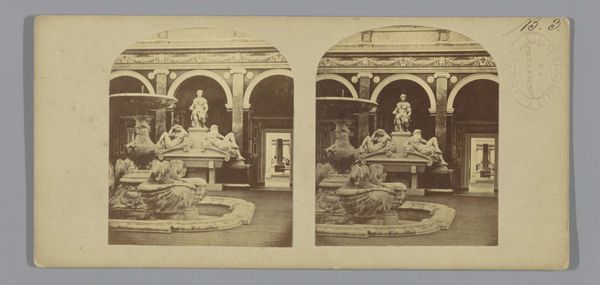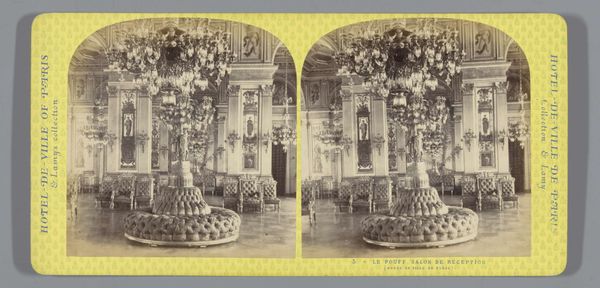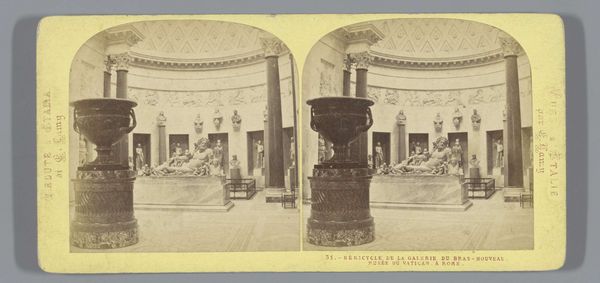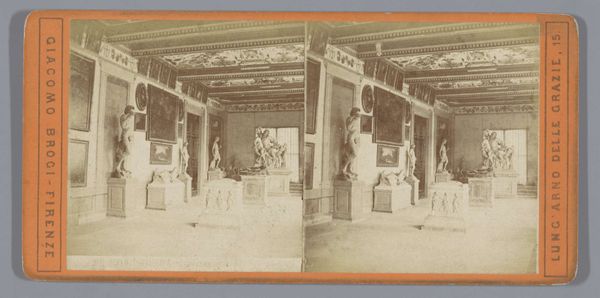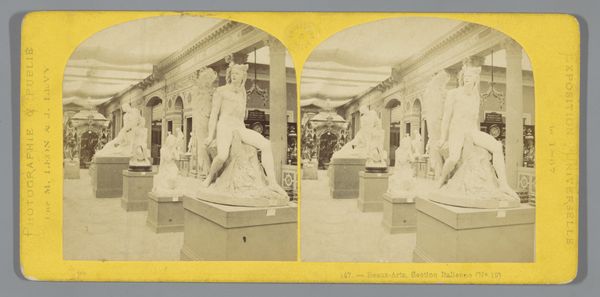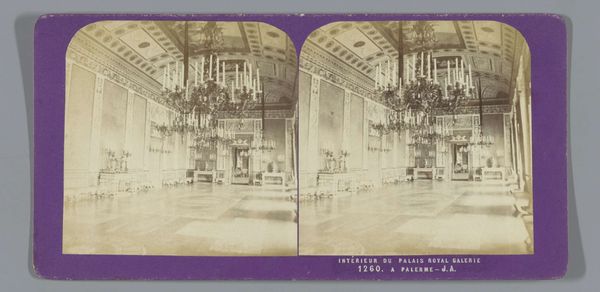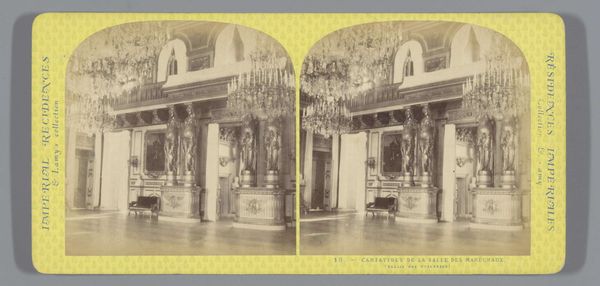
Dimensions: height 85 mm, width 170 mm
Copyright: Rijks Museum: Open Domain
Curator: Before us, we have an intriguing print called "Kamer van de consul in het Palais des Tuileries," captured by Ernest Eléonor Pierre Lamy sometime before 1871. What are your immediate thoughts? Editor: Overwhelming, yet strangely cold. The sheer opulence—the chandeliers cascading like frozen waterfalls—competes with an odd emptiness. It’s as if a grand stage is set, but the actors have all left. Curator: Precisely. This photograph documents the Salon du Premier Consul, within the Tuileries Palace. The architecture leans heavily into neoclassicism, a deliberate attempt to connect the regime with the perceived glory of ancient Rome. Editor: It's all a bit too calculated, isn't it? I'm almost bothered by the symmetry of it all! Those massive vases… Are they meant to inspire awe? Or perhaps a touch of intimidation? Like a museum trying too hard. Curator: In its day, imagery of grand spaces were indeed vital propaganda, impressing upon viewers the wealth and power of the empire. Think about who controlled not only artistic production but also dissemination. Prints like this allowed wide circulation and cemented particular viewpoints. Editor: I keep circling back to that coldness though. It’s beautifully rendered—you can practically feel the marble—but the emotional temperature feels like absolute zero. Maybe that's the nature of photographing such spaces, or perhaps, some anxiety around the impermanence of it all... because we all know that it would soon burn to the ground during the Paris Commune, just a few months later. Curator: Indeed, considering that historical inflection, the photograph almost takes on the aura of an epitaph, a memorial for something on the cusp of being lost forever. The Palais des Tuileries went on to become this potent emblem of fallen power. Editor: Hmm, seeing it as a historical document like that… it gives it a strange kind of melancholic power. Curator: Exactly. This is an artifact from the age of emperors, one that invites us to reflect upon the spectacle of power, how its captured, and ultimately, how even marble palaces crumble under the forces of social change. Editor: Well, that's certainly given me pause to consider it a bit longer; thank you.
Comments
No comments
Be the first to comment and join the conversation on the ultimate creative platform.
